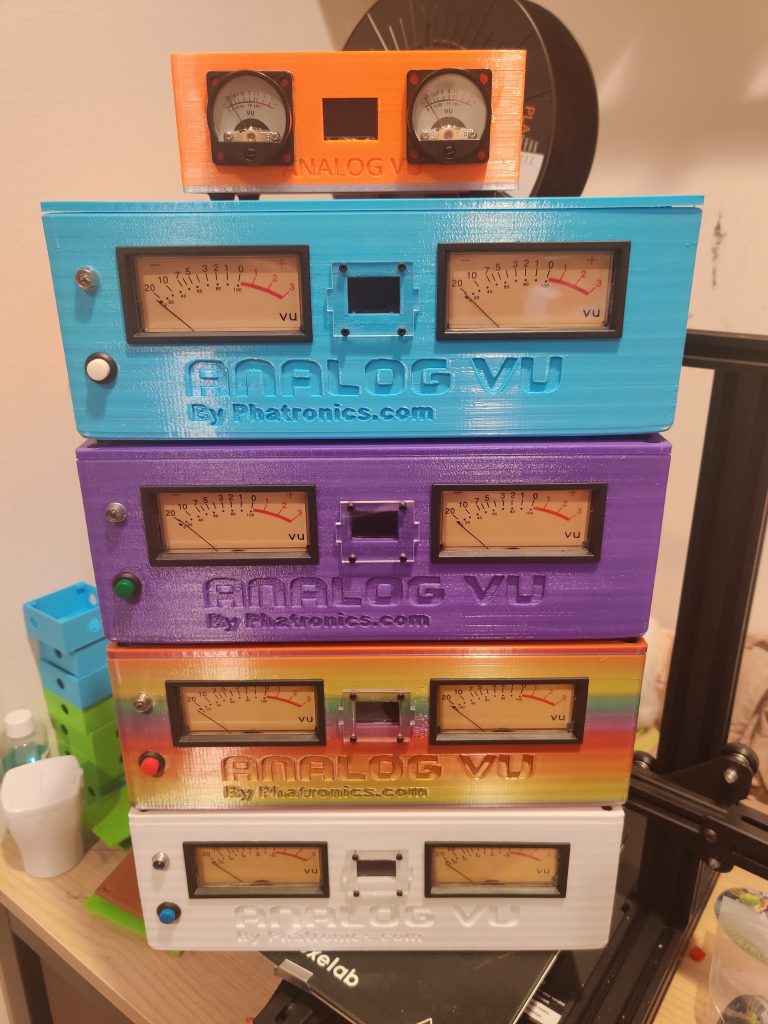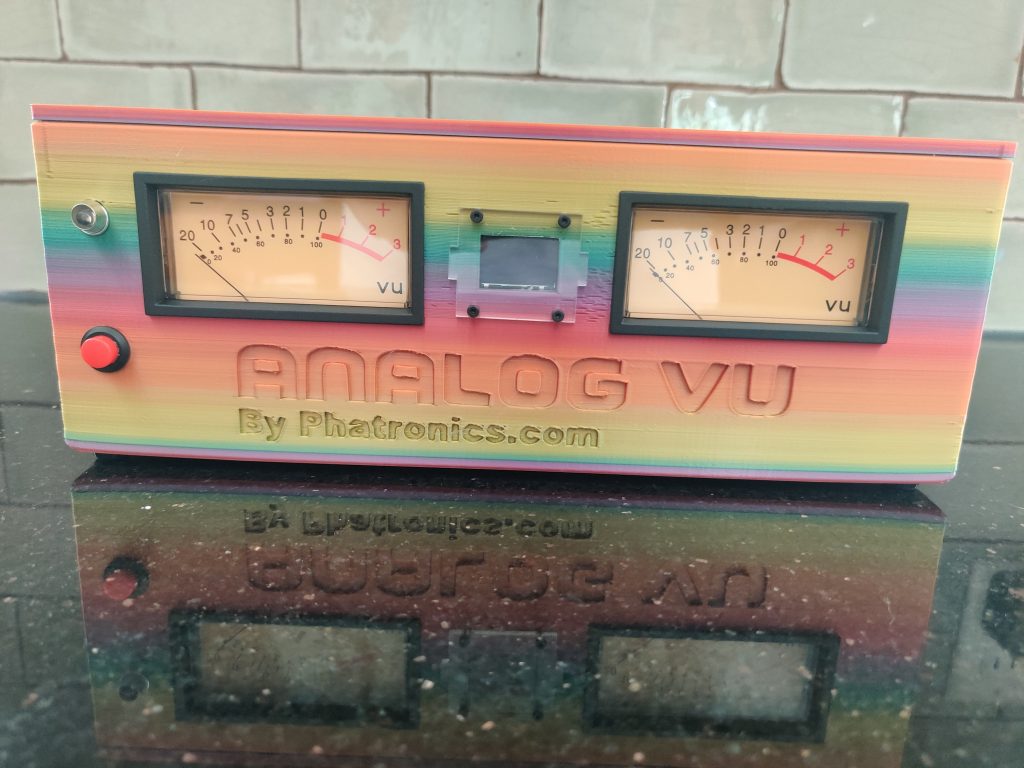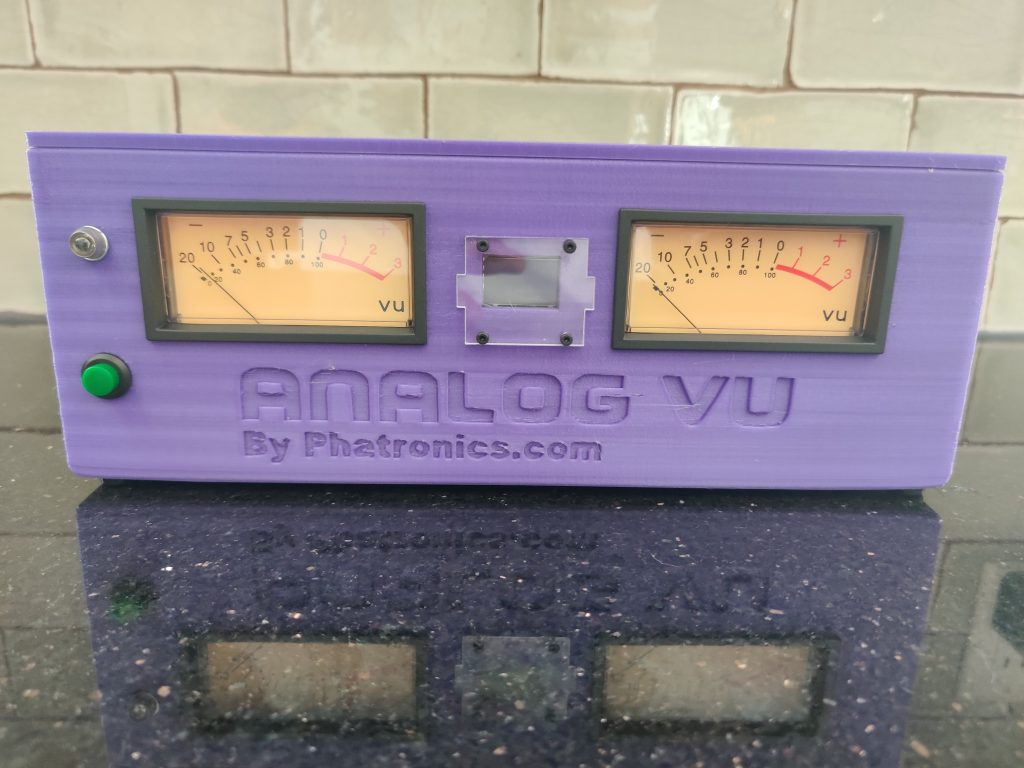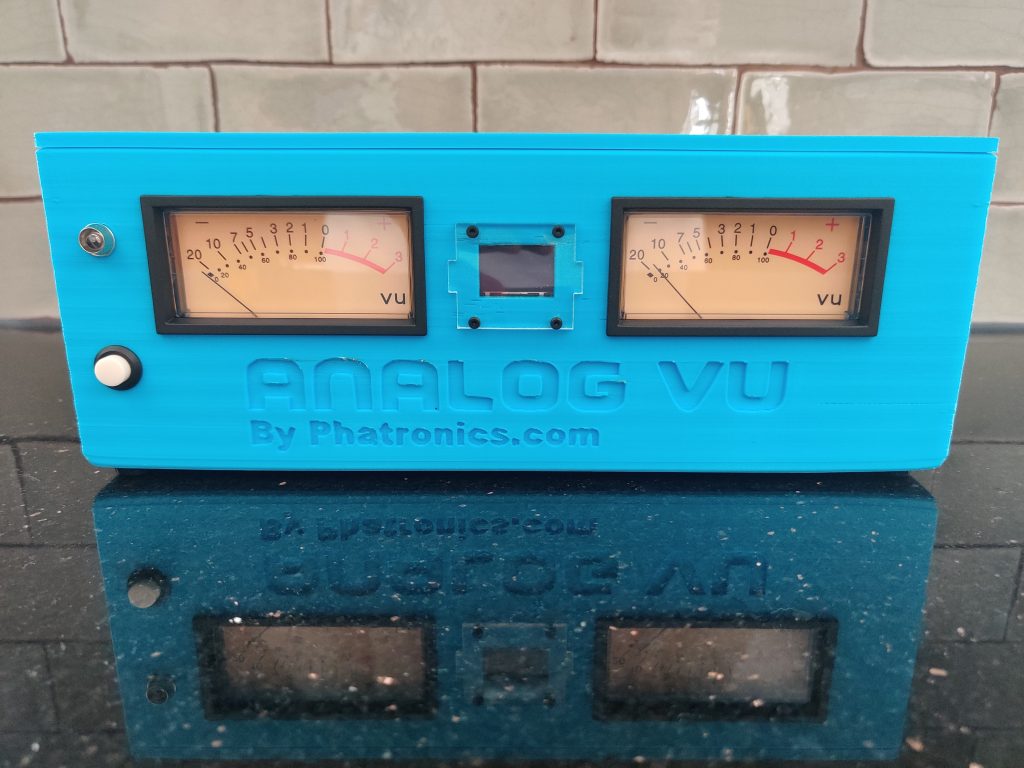ANALOG VU
The all-new Phatronics Analog VU meters are great! They are made one at a time by hand in the USA with point-to-point wiring. Many DAWs have a built-in analog style meter, or you can buy a plugin, but these take up real estate on your screen and are not always accurate, depending on how hard the CPU is working. Having a real Analog VU meter that you can look at any time to see a precise representation of your audio is essential.
FEATURES
• 2 Large analog VU meters representing left and right stereo with LED backlights.
• XLR and ¼ TRS ins and outs on the back panel.
• Front panel on/off switch with power indicator light
• External 9V heavy-duty power supply
• Built-in Spectrum analyzer to give you a representation of frequencies. (From Left Input)
• Fully custom 3D printed case.
• Ability to adjust and calibrate the unit for your specific setup.
INSTALLATION
Simply remove 2 channels from your interface and plug them into the left and right inputs of the Analog VU. Ensure they are line outputs, not powered outputs, or you will damage the unit. Optionally, you can also use the Analog VU meter's built-in outputs to return to your interface/DAW. It is a direct connection, and there is no signal loss.
CALIBRATION
We test and calibrate each unit, so it should work perfectly right out of the box. However, if your system is set up differently, you can easily calibrate the unit by sending it test tones (we use 1k) and adjusting the 2 small pots on the circuit board, which are located inside at the bottom of the unit. You can adjust them with a small Phillips screwdriver.
VU meters are designed to have a dynamic characteristic that approximates the human ear's response. When a speech waveform is applied to a VU meter, the movement will indicate peaks and valleys in the signal. A peak program meter (PPM) by contrast indicates not average levels but these peaks with incredibly quick response. The VU spec itself is well-defined and tells you what the rise and fall times of the meter should be. It's these times that are difficult to get right but are so essential to get a meter that properly reflects music loudness rather than just bouncing up and down to the music.







